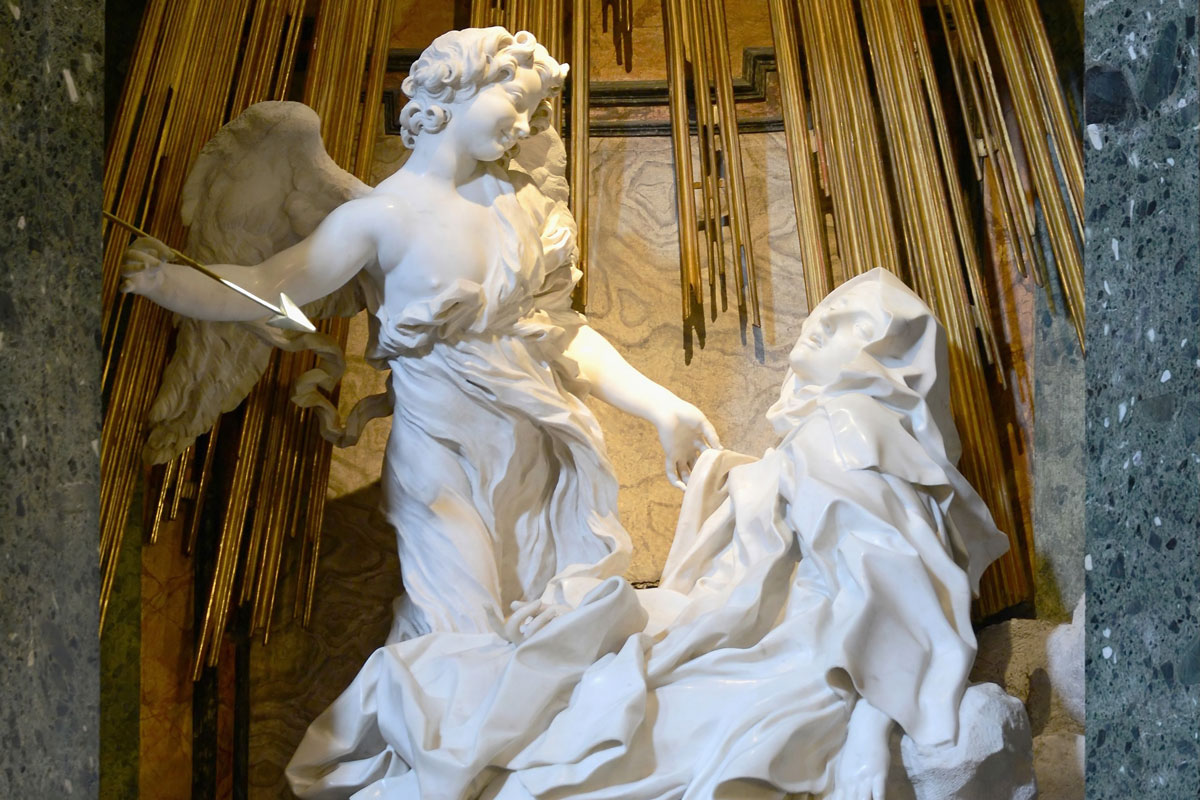Spiritual Ecstasy
Spanish 344 uses sculpture to explore paradoxes between religion and aesthetics.
Among Gian Lorenzo Bernini’s most famous works, the Ecstasy of Saint Teresa (1647) is housed in Santa Maria della Vittoria church in Rome. Transfixed by the vision of an angel who is on the verge of piercing her with an arrow, the enraptured Teresa reclines on a cloud, her hand and foot delicately emerging from a sea of drapery. Positioned high above eye level, the sculpture appears to defy gravity, its cascades of folds floating airily above the viewer. Rippling into surrounding space, they appear uncontained, thus challenging the idea of artworks as bounded within a frame. Movement and extravagant sinuousness replace the neat lines and contained symmetries of the Renaissance. In Spanish 344: Visual Art in Spanish Baroque Literature, we use the sculpture to talk about how baroque culture couples grandiose aesthetic ambition with spiritual fervor and the paradoxes this generates. How can we reconcile the baroque’s investment in creating physically stunning art with its religious distrust of the sensorial world? We also discuss the discrepancies between Bernini’s highly eroticized depiction of Teresa’s ecstasy and the view of it foregrounded in a passage from the saint’s autobiographical Libro de la vida, from which the sculpture is inspired. How do texts and visual works differ in their ways of formulating the yearning for the infinite that informs mystical experience? How, in turn, does gender play into these differences? Contending with such questions is crucial to grasping the ideologically and philosophically complex nature of baroque aesthetics.
